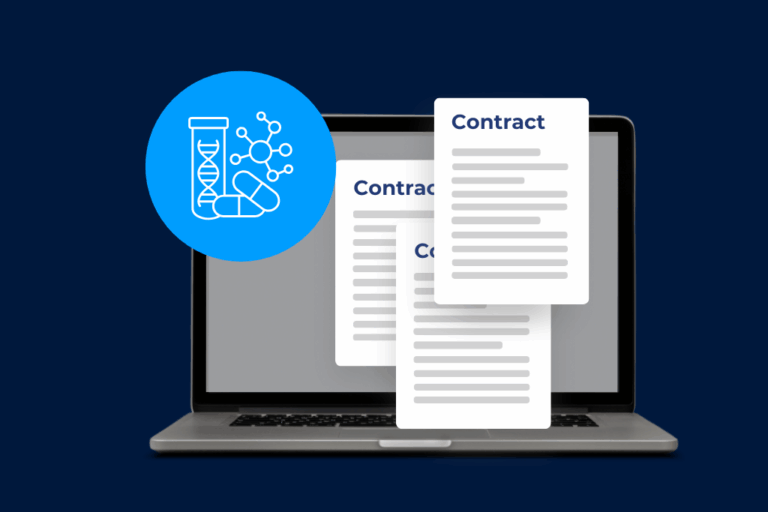The public sector is perhaps the most well-known for its resistance to change when it comes to digitalization. This resistance is not senseless, as such entities work with sensitive data, often secret information and cannot compromise on security. Nevertheless, there have been numerous efforts in the last years to digitize processes in public services, making paperwork and legal procedures easier. In the European Union alone, countries like Denmark or the Netherlands have improved citizen’s access to services through digitalization.
Now, the digitalization process must also expand to internal organizational processes within public sector entities—for instance, by digitalizing board meetings or contract management for tenders.
However, this transition comes with challenges. To name a classic example, in managing documentation during frequent public procurement procedures. These procedures involve meticulous preparation of tender notices and continuous oversight by responsible officers to ensure compliance and address discrepancies or irregularities. How to tackle security, privacy, compliance and more, in such an environment?
Challenges in Digitizing Public Sector Processes
Balancing Modernization with Security and Privacy
Public entities handle sensitive information and require secure solutions before adopting digital systems. Any technology used must comply with stringent security standards to prevent data breaches and unauthorized access. Cybersecurity threats are at an all-time high, and this is not likely to change soon. Therefore, public institutions are required to use the most secure cloud services, advanced encryption, and other tactics such as multi-factor authentication. Furthermore, there is still work to be done when it comes to tech and security literacy. Internal personnel must be trained to recognize cyber threats, ensuring that security risks are minimized.
Another challenge is balancing transparency with confidentiality. While public entities are expected to maintain transparency in procurement and contracts, they must also protect confidential supplier data and proprietary information. To achieve these goals, public entities that want to begin their internal digital transformation must choose the right tools and ensure that these adhere to the latest compliance and data protection regulations, such as the GDPR or DORA in the European Union.
Keeping up with Evolving Regulations
This is a never-ending challenge for anyone working in a legal position, pretty much anywhere. Public institutions, more than any other entity, are obliged to comply with all regulations affecting their regions, and this is no easy task. Legal frameworks change regularly, so if a public entity wants to digitize, for example, its tender management process, it will need to choose a tool that ensures total compliance with the highest security standards and that adapts to the jurisdictions required. The introduction of new procurement laws and anti-corruption measures adds another layer of complexity, requiring continuous monitoring and legal expertise.
Let’s take a concrete example. Cross-border tenders introduce regulatory challenges, as different countries may have conflicting compliance requirements. The increasing adoption of green procurement policies, aimed at promoting sustainable purchasing, means that organizations must also evaluate the environmental impact of suppliers and services. Failing to meet sustainability regulations can result in disqualification from tenders, creating further administrative burdens. By adopting the right contract management solution, these discrepancies can be easily identified, for instance.
Compliance Risks
Failing to meet compliance standards can lead to legal and financial consequences. Public sector organizations risk losing tenders or facing penalties if their processes do not align with regulatory updates. Manual compliance tracking can be inefficient and prone to errors, making automated compliance tools a necessity.
Another key concern is audit readiness. Public institutions must be prepared for regular audits, ensuring that procurement and contract records are well-documented and easily accessible. Non-compliance findings can lead to financial penalties, reputational damage, or even criminal liability for key officials. The use of digital audit trails helps mitigate these risks by providing clear records of procurement decisions, supplier evaluations, and contract approvals.
Benefits of Legaltech Tools for the Public Sector
Board Management Tools
LegalTech tools for the Public Sector can really enhance board management strategies if selected carefully. These structures have organizational and governance bodies, just as any business does. Among the main advantages for public sector structures, we can list:
By choosing a board management solution that meets international security standards, public sector entities can ensure compliance without compromising data protection while enhancing internal collaboration.
Contract Management Tools and Their Impact
Contract management is a critical aspect of public procurement, often requiring meticulous tracking and documentation. LegalTech tools for the Public sector, such as a CLM, can drastically improve this process by:
The real plus, AI driven features: For instance, contract management platforms with AI capabilities can flag potential compliance risks before they become an issue. These systems also ensure that certifications required for participation in tenders, such as ACN certification, are continuously updated and verifiable. In the case of advanced tools like the DiliTrust CLM, the OVH cloud service is certified, allowing for compliance by extension.
Improving Processes with LegalTech Tools for the Public Sector
Public procurement is an area where digitalization can bring substantial improvements. Automated documentation, real-time compliance tracking, and AI-powered decision support reduce administrative burdens and enhance oversight. The Tender and Contracts Office, in coordination with the Sole Project Manager, can leverage these tools to streamline procurement and contract execution while ensuring regulatory adherence.
Conclusion
Adopting digital tools to handle internal and external task management for the public sector will become increasingly inevitable. In this article, we used the example of tenders, procurement, and contract management. The right tool reduces compliance risks, enhances efficiency, and improves overall oversight. With the right solutions, public sector organizations can navigate evolving regulations while ensuring security and transparency in their processes.


